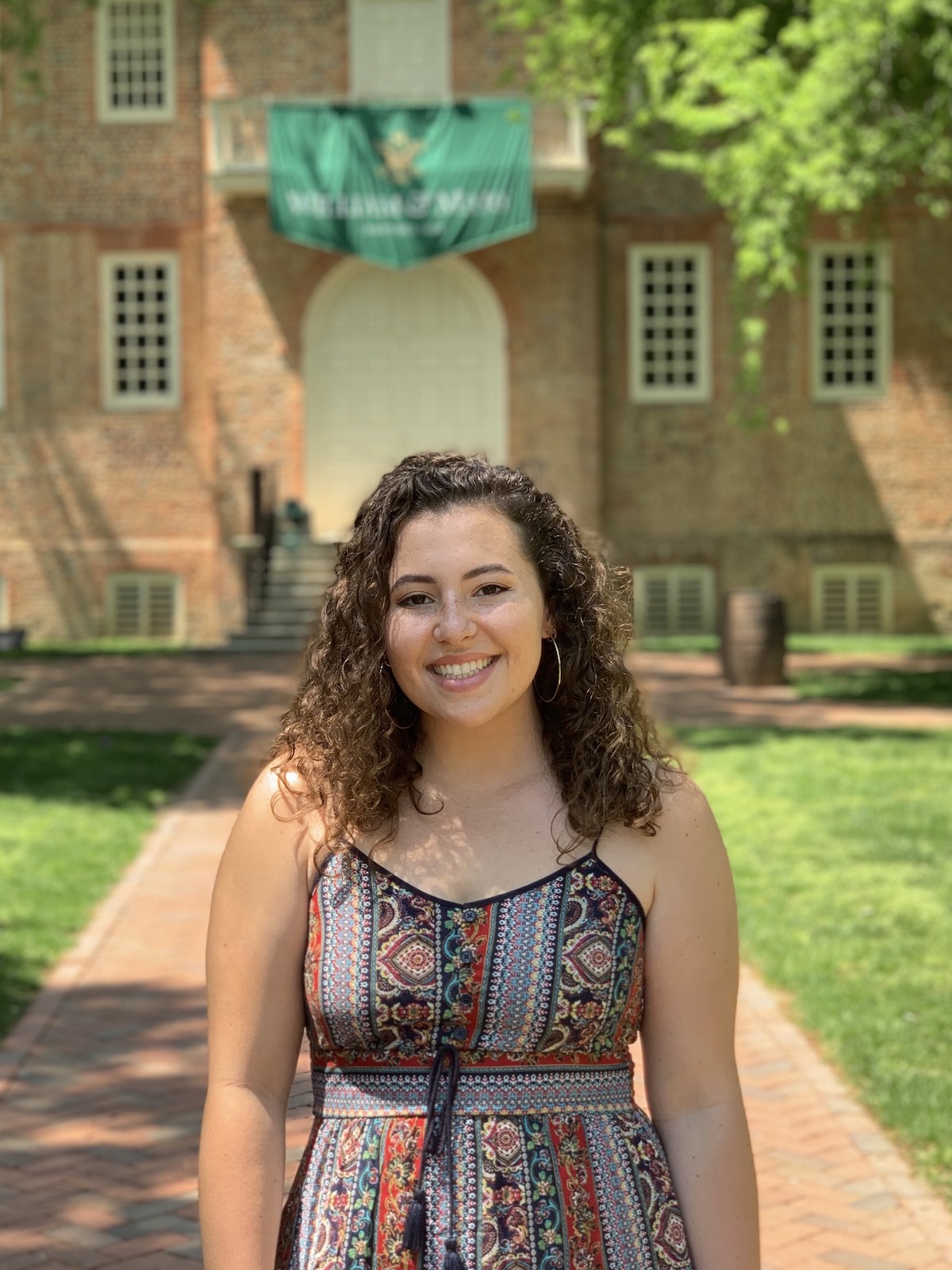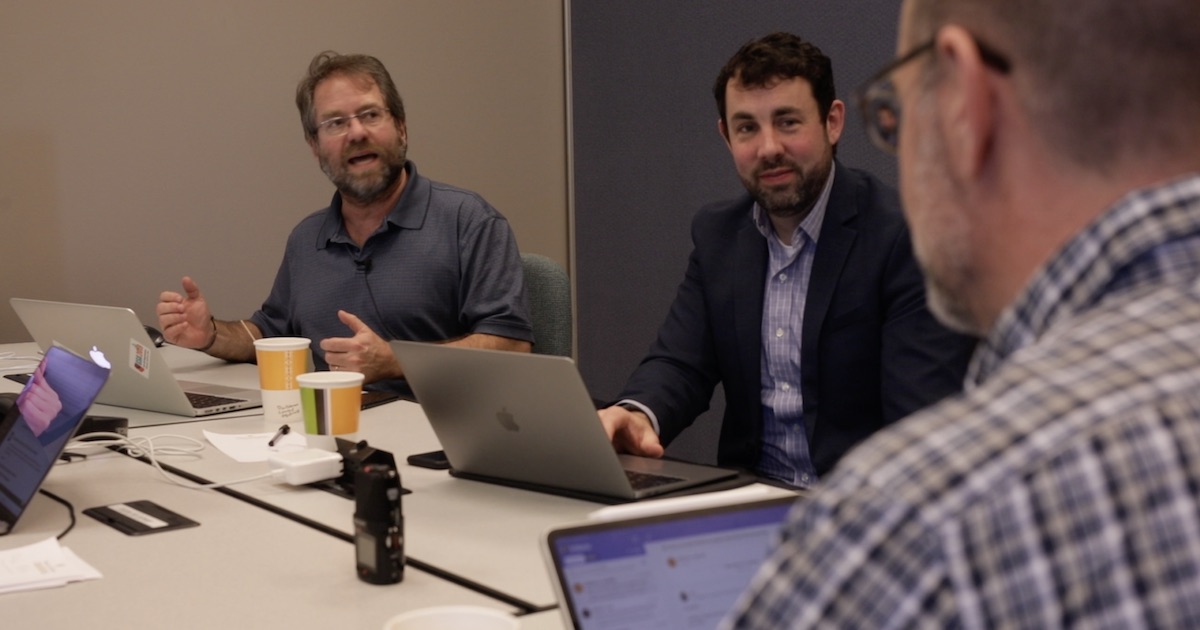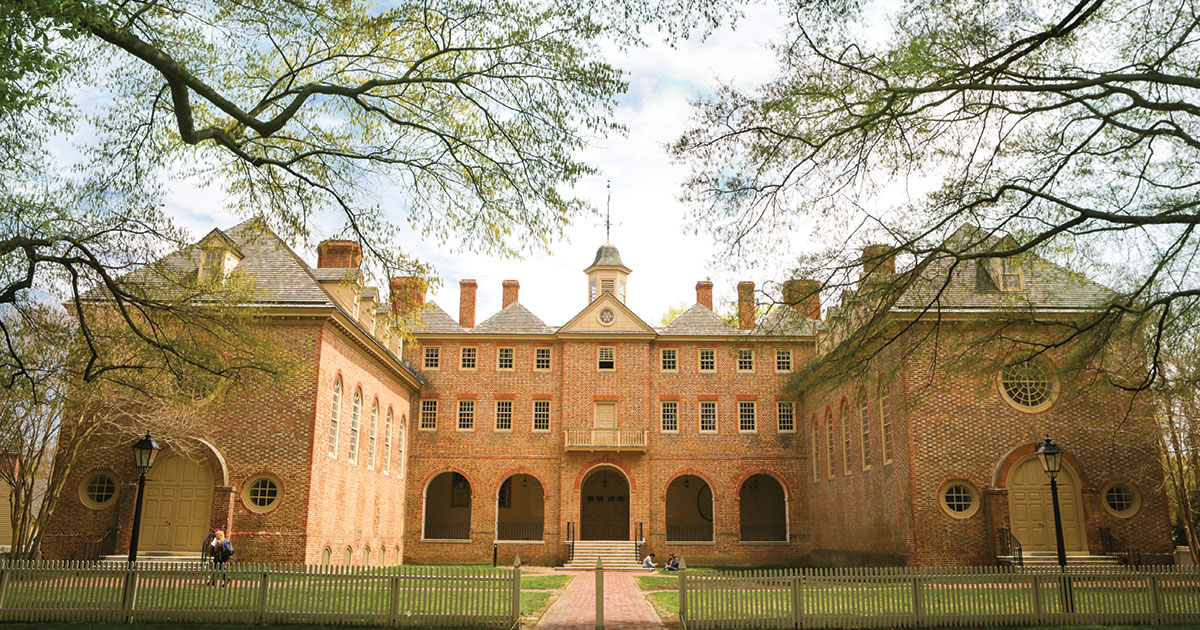Tech Support
W&M's Studio for Teaching & Learning Innovation provides critical assistance for remote classes
William & Mary’s decision in early March to move all classes to a remote format in response to COVID-19 gave the newly created Studio for Teaching & Learning Innovation an urgent purpose: Help faculty and students complete the semester.
The Studio opened last August as a hub for teaching and learning at W&M to assist faculty collaboration across traditional boundaries and leverage new technologies that support diverse modes of teaching. The need for those services came into sharp focus this spring.
“We knew it would be instrumental, but we didn’t know how critical it would be to our ability to function as an institution,” says Ann Marie Stock, vice provost for academic and faculty affairs, who led a team tasked with crafting a vision for the Studio. “It would have been very difficult – if not impossible — to move more than 2,000 courses to remote delivery in a couple of weeks without it.”
At the time of the transition to remote classes, some faculty members lacked experience using technologies that were suddenly essential for teaching, says Mark Hofer, director of the Studio for Teaching & Learning Innovation (STLI).

“We redirected all of our time and effort to building the Keep Teaching website, hosting live webinars, holding one-on-one sessions and assisting faculty with what technology tools to use and how to use them,” Hofer says. “We recognized that this would be an incredible challenge for faculty and students alike, and were thinking of it almost as triage.”
Working with W&M Libraries and Information Technology, Hofer’s staff of eight quickly created video tutorials on how to use programs such as Zoom, Blackboard and Panopto. The website highlights communication strategies, course material distribution, options for teaching classes remotely, lab activities, peer-to-peer collaboration among students, methods for conducting assignments, tests and quizzes, frequently asked questions and information on where to get additional help.
During the switch to remote classes, there were almost 4,500 visits to the Keep Teaching website and more than 6,000 views of the STLI’s videos, Hofer says. In a survey of faculty later in the semester, 40 percent cited unfamiliarity with technology as a challenge they had to navigate.
Philanthropic support through the For the Bold campaign has bolstered STLI’s work across William & Mary’s schools and departments during this crisis. Between March 12 and May 29, donors contributed about $136,000 to the Studio for Teaching & Learning Innovation Fund.
“Private funds have been essential,” Stock says. “They’ve allowed the Studio to address unexpected needs that arise and support individual faculty members. Private funds are often the piece that helps to make a cohesive whole.”
Now that the spring semester is over, the challenge is to move from short-term triage to longer-term thinking and planning about how to adapt classes for either in-person or remote learning, and to take advantage of the benefits that digital resources can offer. To that end, the Studio is offering a program called “Convert Your Course” to help faculty members make more effective use of online resources when designing their classes.
“It really focuses more on the teaching than the technologies and tools,” Hofer says. “We’re trying to help faculty be as flexible as possible in their approach so they can shift more easily from face-to-face to remote teaching or hybrid classes.”
Reflecting on the spring semester, Stock notes that faculty and staff learning partners better understand the difference between remote, versus online, teaching and learning.
“Remote learning is taking what’s done in the classroom and doing it in a different modality,” she says. “Online learning is designing a course from the ground up.”
Hofer adds another observation, one of resilience and resourcefulness under pressure: “It was no one’s preference to finish the semester this way, but faculty remained very dedicated to serving the students. That was probably the most meaningful takeaway — to see how focused faculty were on supporting their students during a really challenging time.”
Challenges notwithstanding, students and faculty members have found some advantages to working in the online environment.
During an April 15 Community Conversation with President Katherine Rowe, Henry Blackburn ’20, who was a student volunteer in the admissions office before he graduated on May 16, talked about the increased engagement with prospective students.

Photo credit: Caroline Donnelly
“The amount of personal interactions I’ve had in light of all this — whether it’s calling or Zooming or Facetiming students who are looking to come here or who get admitted, or the interviewees from the summer who have reached out to talk … it has been so awesome. I think it is changing what we take to be the typical admissions experience for people who are coming in, and I’m getting to meet a lot of really interesting students that I never would have had a chance to.”
Parent & Family Council member Caryn Helmandollar P ’22 says she and her daughter, Carter Helmandollar ’22, a marketing major, were impressed by how quickly William & Mary was able to pivot to remote classes and adapt to new formats. In a marketing class, for instance, students were able to work virtually on a group project that culminated in a video presentation, rather than one in person.
“In some of the smaller classes, Carter got a lot more personal feedback via email,” says Helmandollar, who lives in Moseley, Virginia. “I don’t think she’d want to do it forever, but in a crisis it was the right thing to do.”
Hofer says office hours seem to work well in Zoom, and faculty members have been incorporating more alternatives to print-based materials, such as online resources from Swem Library, in their classes.
“They’ve been surprised and excited about what can be offered in a digital format,” he says.
An exhibition titled “Rising: The American Indian Movement and the Third Space of Sovereignty” illustrates how the necessity of using online resources opened up new possibilities. The culmination of a senior seminar on Native American sovereignty taught by Danielle Moretti-Langholtz in the Department of Anthropology, “Rising” originally was planned as a small display in the Muscarelle Museum of Art running from April 17 to Aug. 2. Each of the nine participating students would have prepared a panel for the show.

Instead, they collaborated on a digital exhibition about the American Indian movement of the 1960s and ’70s with photographs, documents, sound and video that can be seen by people around the world over a much longer time period and become a resource for other students and teachers.
“When the museum closed, I thought, ‘We’ve done this research, maybe we should do an online exhibit. Let’s try something completely different,’” says Moretti-Langholtz, director of the American Indian Resource Center and administrator of the interdisciplinary Native Studies minor. “With this format, everybody was sharing material. Everything was done via Zoom — all the planning, all the sharing of information. It developed into an entirely different process of curation.”
In addition to STLI staff support, Moretti-Langholtz was able to tap private funds through STLI to hire a consultant, Brendan Reed, with the technical expertise necessary to help present the content in a virtual format.
“Some of the most gratifying comments were from people who said they felt like they were in a museum,” Moretti-Langholtz says. “We were interested in a visitor experience. Brendan got us there.”
Christine Nemacheck, an associate professor of government, invited a pair of alumni to talk virtually with students in her American Legal Process course. One is a public defender in Baltimore and the other is an assistant commonwealth’s attorney in Williamsburg.
“Both attorneys were working from home and had schedules that were easier to work with than they often do,” she says. “I think I’ll bring this method — doing some visits by Zoom — into my regular in-person classes when we are back. It was really easy to do and provided a great experience for my students.”
Through the experience of the spring semester, additional needs have emerged. More staffing is high on the wish list, along with professional development opportunities for faculty and funds for testing new tools and technology to evaluate their value for the university community.
“There’s definitely a need for faculty fellows to work with the Studio to help their colleagues excel in this new online environment,” Stock says. “An endowed position for the director would also help to ensure the STLI’s continuity and sustainability.”

Photo credit: Roy Petersen, STLI educational media design and production specialist.
There’s also a desire for a more permanent, expanded physical space. Stock says plans have been developed for a renovation in the library to accommodate a 6,700-square-foot home for STLI.
“We’re in a small space in Swem, which is great for small meetings and workshops,” Hofer says. “We hope eventually to have a more expansive space were faculty members can gather and we can bring more students into the space.”
Virginia legislators who represent the Williamsburg area had backed a multimillion-dollar renovation project for Swem Library’s ground floor, but plans came to a halt when the funds were not included in the last state budget. The library’s long-term vision is a state-of-the-art community hub for William & Mary faculty and learning partners, including new space for the Studio, renovation of the Botetourt Theater and Gallery, and realigned technical library services.
Donor support could help to make those plans a reality.
“There could be a naming opportunity for the Studio,” Stock says. “What an amazing legacy this would be for someone who cares deeply about teaching and learning innovation.”
Jennifer L. Williams of W&M News contributed to this story.

